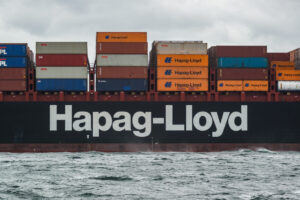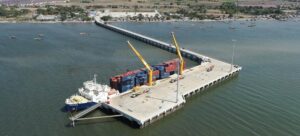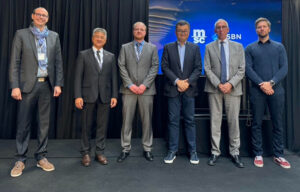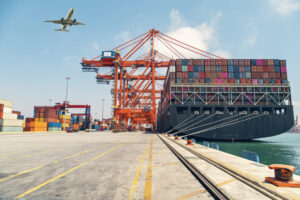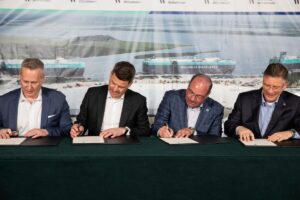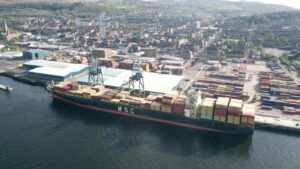The Port of Esbjerg is collaborating on an innovative project offering companies a tool for lowest-carbon transport routes in a bid to continue decarbonise the supply chain.
In partnership with digital technology company Atos, the trimodal tool facilitated by the Danish Ministry of Shipping and national investment agency Invest, will offer companies a variety of route networks in the region.
One of the first of its kind in shipping and global trade, the Port of Esbjerg embarked on the partnership after finding there was no tool for companies seeking the carbon impact of varying routes for transporting goods through the region.
“What we were generally missing was a tool that could make a forward-thinking decision [on carbon emissions],” Jesper Bank, CCO at the Port of Esbjerg, told PTI.
“Let’s say you are sitting in a large company in Spain just purely focusing on CO2, what would be the most beneficial way to go, or the best route to Denmark?”
Calculating the carbon footprints that would result from different transport modes and routes, Port Esbjerg can be a logistics hub where road, rail, and sea transport routes are offered to supply chain stakeholders to highlight low-carbon options relative to its cost.
Jesper will be speaking at PTI’s Container Automation Conference 2021 on 18-21 May. Click here to register!
Bank told PTI that whilst the tool is yet to be operational for customers, Port Esbjerg will work with Atos to build datasets at the EU level for transport modes through trains, freight ferries, and a variety of transport modes.
“You have to map all of the alternatives going from Spain to Denmark. And there are a lot. We needed some kind of system that take a look at that whole picture. This is not just A to B transport, this is complicated.”
Bank emphasised that a cargo-owner’s products being transported will be a key factor in evaluating the cost of transport with its carbon footprint.
“What you need to understand is this is not just a computer system – you need to understand what you are transporting.
“A wind turbine component is one thing; or it could be an agricultural product; or it could be computers. There are huge differences, and these products do not necessarily have to go the same route, even from a carbon emissions perspective.”
The Port is engaging in workshops to better build information sets to offer to customers. But, despite having a vested interest in encouraging greater throughput of cargo through its facility, Bank said some routes may produce a smaller carbon footprint if it does not go through the port.
“It will not be a booking system, it will be a decision tool. As we envision right now, this will be available for all kind of levels and companies out there – and it might even show that a route through the Esbjerg is not the best way to go with CO2 emissions, which would be a fact for the customer.”
“We need this tool,” he continued. “Eventually there will be some kind of alignment between low cost and a low CO2 footprint where you can benefit from both.
“We recognise that it cost is a parameter today, but this is a good ambition for the industry. We might be able to reach a point that low CO2 would mean low cost: that could be good for the company, and the environment both in individual countries but also on EU level.”
Denmark is aiming to reduce its emissions to 70% of its 1990 levels by 2030.


